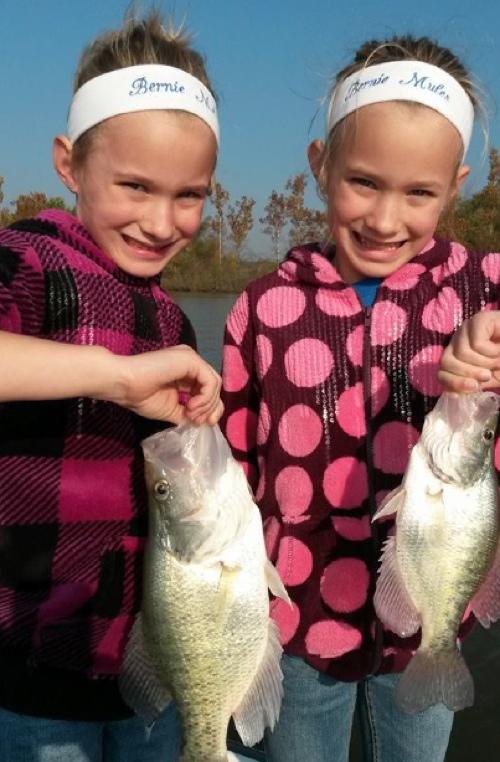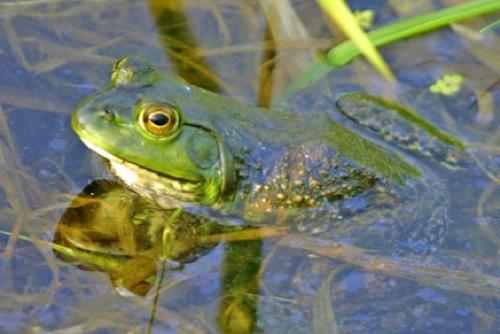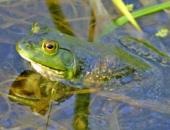
Law enforcement seeking impaired drivers over Independence Day holiday
If you're thinking about driving impaired this week, the red, white and blue flashing lights of your Independence Day holiday may be those of a patrol car - and the view of the fireworks is not so good from a local jail cell.
The Fourth of July is one of the deadliest holidays of the year due to substance-impaired driving crashes. Local law enforcement will be out in full force July 3-5 seeking impaired drivers through increased sobriety checkpoints, roving and saturation patrols, and other enforcement methods. There are no warnings and no excuses. If you drive impaired you will be arrested. Don't risk losing your independence by choosing to drink and drive.
"Last year eight people were killed and 50 were seriously injured in Missouri traffic crashes over the Fourth of July holiday," said Bill Whitfield, executive committee chair for the Missouri Coalition for Roadway Safety. "Two of those fatalities and 11 serious injuries involved a substance-impaired driver."
Often, people have a hard time recuperating financially from the cost of an arrest or the crash itself. Violators risk killing or harming others, face jail time, the loss of their driver licenses, higher insurance rates and dozens of other unanticipated expenses from attorney fees, fines and court costs, car towing and repairs, and lost time at work.
The Missouri Coalition for Roadway Safety recommends these simple tips to avoid a drunk-driving disaster:
• Before drinking, designate a sober driver.
• If you're impaired, use a taxi, call a sober friend or family member, or use public transportation so you are sure to get home safely.
• If you happen to see a drunk driver on the road, don't hesitate to call local law enforcement.
• Always wear your seat belt. It's your best defense in any traffic crash.
For more information, visit www.saveMOlives.com, or find them on Facebook and Twitter at Save MO Lives.

Missouri - One of the most catchable fish in Missouri waters, especially in the summer months, is the group known as panfish, and the peak catching time is now.
In late June and early July, concentrations of bluegills will be spawning along shallow lake or pond shores.
Look for craters of round light spots on the bottom, which are the nest sites.
Bluegills and sunfish relatives are excellent table fare, possibly better flavored than walleye. These panfish may be filleted or scaled, then rolled in seasoned flour and fried.
Jack Anderson and his wife of 42 years, Charlotte, settled in his boat and cruised to their favorite bluegill and crappie fishing hole. Anderson pointed out that his wife has matched casts with him ever since they made a honeymoon fishing trip to the Lake of the Ozarks back in 1973.
Like many Missouri anglers, the Andersons have been called panfish anglers, which is appropriate for people who primarily fish for bluegill, perch and crappie.
Charlotte said, " We like to fish for panfish because we like to eat what we catch. You can't get a better tasting fish than a crappie or bluegill."
On one of their latest fishing trips, the goal was to put enough fish in the boat for a couple of meals. In seconds after arriving at one of their favorite spots, they cast their hooks with earthworms. In less time it took to say, "I got one," Jack pulled in an 8-inch fighting bluegill. As he spoke, his wife hauled in another big bluegill. In less than an hour, they had caught about two dozen fish including a one-pound crappie.
Anderson said, " I have done a lot of bank fishing in my life, particularly when I had trouble with my back. Like anyone who fishes for panfish from the bank the biggest problem is getting your line far enough out to catch fish. I found by using a small sinker and a bobber works best."
It doesn't matter if the couple are fishing from the bank or in a boat, they catch their share of panfish and then some.
A closer look at Missouri panfish:
Green sunfish: State record is 2 pounds, 2 ounces taken from Stockton Lake back in 1971. Its back is dark olive with lighter sides. The gill cover lobe is black, except for light colored red margin. Six years would be a long life for green sunfish.
Bluegill: State record is 3 pounds taken back in 1963 from a pond. Like most of the panfish, bluegills provide good table fare. They may be best when coated with seasoned flour and fried in butter. The bluegill's fighting qualities are excellent. They can be taken on a wide variety of lures and bait.
White crappie: The state record is 4 pounds, 9 ounces taken in 2000 from a pond. It has the same general appearance as a black crappie except slightly more elongated. It also has sides of silver with shades of purple and seven to nine vertical bars. It's good on the table, but a notch lower on the culinary scale than the black crappie. They generally don't fight as well as the black crappie.
Black crappie: The state record is 4 pounds, 8 ounces, taken from a farm pond in 1967. The black crappie can live 10 years or longer. It has dark specks on sides than are both yellow and green. It offers good table fare. Black crappie are good fighters who prefer clearer water than the white crappie.
Panfishing techniques
For panfish, most anglers rely on small hooks tipped with minnows or worms. Spinners and small spoons work on panfish.
Fly fishing anglers have good luck with panfish species by casting small poppers to top feeding fish and using wet flies to drop into feeding zones.
Pan-fishermen will want to look for dropoffs during the summer. Still-fishing with a small jig or flyfishing with wet flies or small poppers is effective for bluegills.
With thousands of ponds, many large impoundments and streams to fish plus a season that never closes, Missouri pan-fishermen are ready for a summer of good fishing and great eating.

Cape Girardeau, Missouri - Here’s the preliminary list of dates and times you’ll be able to catch a glimpse of history along the Mississippi River in Cape Girardeau during 2015. As of mid-June, 10 riverboat dockings are scheduled by 3 different boats.
Please note that these dates and times are subject to change at the will of the boats’ companies and river levels. Dates/times currently scheduled are as follows:
American Queen
*July 2 and 6 dockings cancelled due to high Mississippi River levels
July 2 Noon – 5 p.m.
July 6 8 a.m. – 5 p.m.
July 17 10 a.m. – 5 p.m.
Oct. 14 8 a.m. – 1 p.m.
Queen of the Mississippi
*Plans to dock the night before
July 15 9:15 a.m. – noon
July 19 9:15 a.m. – noon
July 30 9:15 a.m. – noon
Sept. 14 9:15 a.m. – noon
Sept. 23 2:15 p.m.
American Eagle
*Plans to dock the night before
Aug. 18 9 a.m. – noon

National Pink Day is observed annually on June 23rd. This day is set aside for the color pink and all it represents.
First used as a color name in the late 17th century, pink as a pale red color which got its name from a flower of same name.
Surveys were taken in both the United States and Europe with results indicating that the color pink combined with white or pale blue is most commonly associated with femininity, sensitivity, tenderness, childhood and the romantic. Pink, when combined with violet or black is associated with eroticism and seduction.
Dating back to the 14th century, “to pink” (the verb) means “to decorate with a perforated or punched pattern”.
In the Middle Ages, pink was not a common color. Occasionally it was seen in women’s fashion and religious art. In the 13th and 14th century, the Christ child was sometimes portrayed dressed in pink, the color associated with the body of Christ. Pink was mainly used for the flesh color of faces and hands during the Renaissance.
The Rococo Period (1720-1777) was the golden age for the color pink. Pastel colors became very fashionable in all the courts of Europe during this time. Madame de Pompadour (1721-1764), the mistress of King Louis XV of France, was known for wearing the color pink, often combined with light blue. At one point in time, Ms. Pompadour had a particular tint of pink made specifically for her.
Pink ribbons or decorations were worn by young boys in 19th century England. The men in England wore red uniforms and since boys were considered small men, boys wore pink.
Pink became much bolder, brighter and more assertive in the 20th century and in 1931, the color “Shocking Pink” was introduced.
As one of the most common colors of flowers, pink serves to attract the insects and birds that are necessary for pollination.

Frogging can be done with either a fishing permit or a small game permit. Children under the age of 16 and Missouri residents 65 years of age or older are not required to have a permit. The Wildlife Code of Missouri allows those with a fishing permit to take frogs by hand, hand net, atlatl, gig, bow, trotline, throw line, limb line, bank line, jug line, snagging, snaring, grabbing or pole and line. With a small game hunting permit, frogs may be harvested using a .22-caliber or smaller rimfire rifle or pistol, pellet gun, atlatl, bow, crossbow, or by hand or hand net. The use of an artificial light is permitted when frogging.
Missouri has two frog species that are legal game — bullfrog and green frog. Bullfrogs are larger and therefore more sought-after. The taste and texture of frog meat is similar to that of fresh-water fish. For frog leg recipes, visit the MDC website at mdc.mo.gov/node/15131.
The daily limit is eight frogs of both species combined. The possession limit allows you to have no more than 16 frogs at a time.
It's important to know once a frog is speared or shot, it must be harvested. The Wildlife Code of Missouri prohibits the release of a speared frog as "wanton waste" because the animal is not likely to recover. Any frog taken into actual possession, unless immediately released unharmed after being caught, is included in the daily limit.
Almost any place with enough water to float a canoe is likely to harbor at least a few frogs. Frogs can be found in farm ponds and huge reservoirs, creeks, drainage ditches and rivers, sloughs, marshes and swamps statewide.
Conservation makes Missouri a great place to hunt and fish, so grab a gig and visit a pond or simply grab a frog and head to the frying pan before the "frog days" of summer are over.










